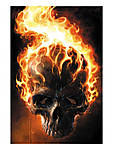Quoted Text
All solder, unless specially marked, are 60/40 leaded. You want the thin ones ( I use 0.3mm ) so you can chop it into tiny chunks. Even the thinnest ones have rosin flux inside, but it's not enough.
The main differences from using a solid soldering iron is that you don't actually touch the brass to conduct heat. Butane flame burns at much higher temperatures, so you control temperature of the soldering joint by adjusting the amount of time the pieces are exposed to the flame.
Move the torch away as soon as you see the solder melt, so you can avoid burning the brass.
Actually, I lied. You are better off soaking the soldered pieces in dishwasher soap before supergluing or painting. Paste is an oil, it won't permit CA or paint to cure.
Hi Brian,
Sorry to discuss this in this post, but I think it could be useful for everybody.
You are right. The burner isn't that good, but a professional one is to costly for an experiment.So this week I came back to my soldering iron again. But there is an alternative, which I haven't used yet:
On a modeling show in Paris I saw some train modelers using welding (we call it 'point welding') in which case they were able to weld HO scale brass locomotives with the same tiny details as we use as modelers. The guy told me it had temperatures around 1500 degrees celsius, but because of the nature of this technic (very short time and accurate heating) they didn't burn the brass. Quite impressive I have to say. I saw some work and thought this would be the system to use for us in fact, but the welding machine costs 450 euro's... It can be found on
http://www.qms-conseils.fr. The name of the welding machine is 'Superchief 250 welding system'.
The guy used fluid solder (brand: Castolin 1 'Pate a etamer contenant decapant et metal d'apport (excuses to our French friends for leaving out all the exact interpunction), which is sold in France). It's a mixture of zinc and lead.
Anyway, over here in Holland I haven't seen modelers using this method. What about elsewhere?
Lead/zinc solder is not being sold anymore in Holland because of the use of lead. With only zinc (tin) the soldering iron works pretty well with a temperature of 360 degrees celsius.
For me, the only problem still is the flux. Till now I'm only able to get nice results with a product called S-39 from Griffon. It's not fluid... and quite aggressive. I would love to use a more fluid one to be able to benefit from the capillary action of the fluid before I'm going to solder. Does anybody know what I can use and buy in Holland? It seems that the fluid flux is only sold in the USA, New Zealand, etc.

























































